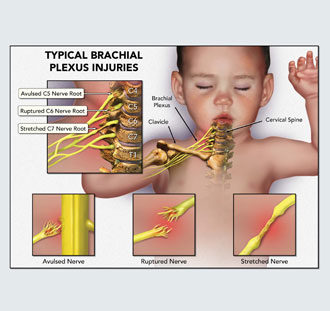
It can be caused during labor or abnormal childbirth by forcefully pulling the shoulder during delivery which can lead to clavicular fracture or shoulder dislocation.
SIGNS AND SYMPTOMS
- Loss of sensation in the arm and paralysis and atrophy of the muscles of affected upper limb.
- This also leaves the patient with impaired muscular, nervous and circulatory development.
- If the injury occurs at age early enough to affect development (e.g. as a neonate or infant), it often leaves the patient with stunted growth in the affected arm with everything from the shoulder through to the fingertips smaller than the unaffected arm.
- The lack of muscular development leads to the arm being much weaker than the unaffected one, and less articulate, with many patients unable to lift the arm above shoulder height unaided, as well as leaving many with an elbow contracture.
- The lack of development to the circulatory system can leave the arm with almost no ability to regulate its temperature, which often proves problematic during winter months when it would need to be closely monitored to ensure that the temperature of the arm was not dropping too far below that of the rest of the body.
- It reduces the healing ability of the skin, so that skin damage takes far longer than usual to heal, and infections in the arm can be quite common if cuts are not sterilized as soon as possible. This will often cause many problems for children since they often injure themselves in the course of their childhoods.
TREATMENT
Some babies recover on their own but some need intervention.
- Physical therapy
- Occupational therapy
- Kinesio taping
- Electrical nerve stimulation (electrotherapy)
- Neurodevelopmental therapy
- CIMT (constrained induced manual therapy)
